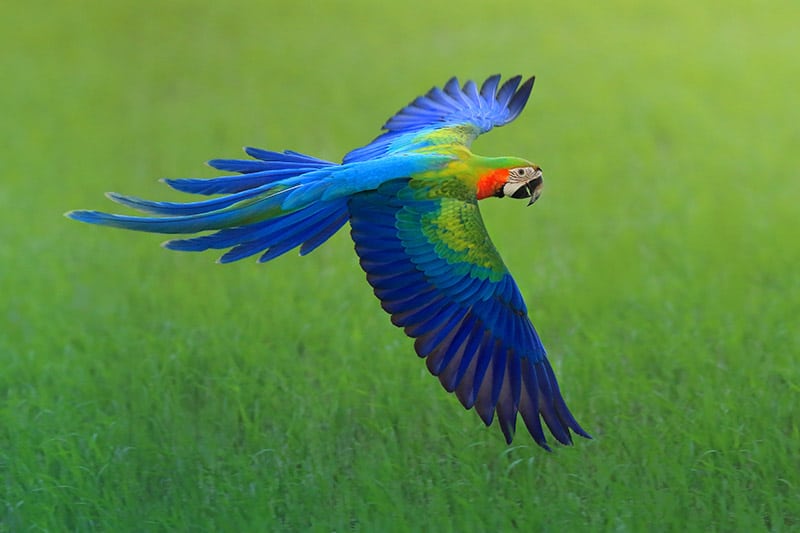What could be a more remarkable sight than a pretty Macaw in freeflight and her human friend racing down the road!
Imagine a bird companion that can actually do something as awesome as this; a pet that can go out in the world with its owner to flex and have fun.
This incredible antic, a race between bird and scooter riding man, took place about a month ago near Kolimbithres beach in Paros, Greece. The length of the race was about 3 miles (5 km). The goal, into the village for coffee!
First the Blue and Gold Macaw takes the lead, and then it’s neck and neck as the scooter races forward. But in the end, as they traverse the twists and turns, the colorful bird cheerfully squawks “hello” to her friend as she pulls ahead to lead rest of the race. It was not a fast race, as a Blue and Gold Macaw can fly between 27-30 mph, but it was a fun race.

Keeping free flying pet parrots is not a new phenomenon; in fact it has gone on for hundreds of years. Before it became common practice to keep pet birds in cages they usually had free reign on their owner’s property. Today however, it is a more unusual sight, and is simply not a good practice for every owner.
As with all pet keeping situations, there are pros and cons to freeflight that must be considered carefully.
The parrot owner must be very dedicated and the parrots must be trained, as they are not automatically expert flyers. It can take anywhere from a few months of indoor work, to several years, before they are trained and ready for an excursion in the open. There must also be a place for them to fly that is relatively safe from predators and other dangers.
Darren contributed the above photo to Animal-World showing his lovely Red Fronted Macaw, Polo, in freeflight. He says he will free fly Polo indoors and outdoors, but strongly cautions, “This is done only with much training. Do not try this unless you know what you are doing.”
There are a small number of parrot owners that train their birds to fly freely. Most will chaperone their bird’s outdoor excursions, though a few let their birds fly without supervision. Then there are also those whose parrots are allowed a larger “free space.” This is provided by using aviary netting or walking them with a bird harness.

Owners who practice freeflight believe these birds enjoy a happier, healthier life than clipped birds and if flying is handled properly, danger can be avoided. It takes a very close relationship with a bird to train them for freeflight.
Darren’s close relationship with Polo is obvious from his remarks, “Polo is gorgeous, very loveable, and LOVES to lie on his back in my lap and play. He can be a little nippy, but not hard. He is not loud at all and LOVES attention. They are absolutely fantastic birds and a GREAT joy to have. He is AMAZING… ;)”
Ultimately it’s that very close relationship between keepers and their parrots that keeps the birds around!
Clarice Brough is a team member at Animal-World and has contributed many articles and write-ups.
Featured Image Credit: Martin Mecnarowski, Shutterstock
